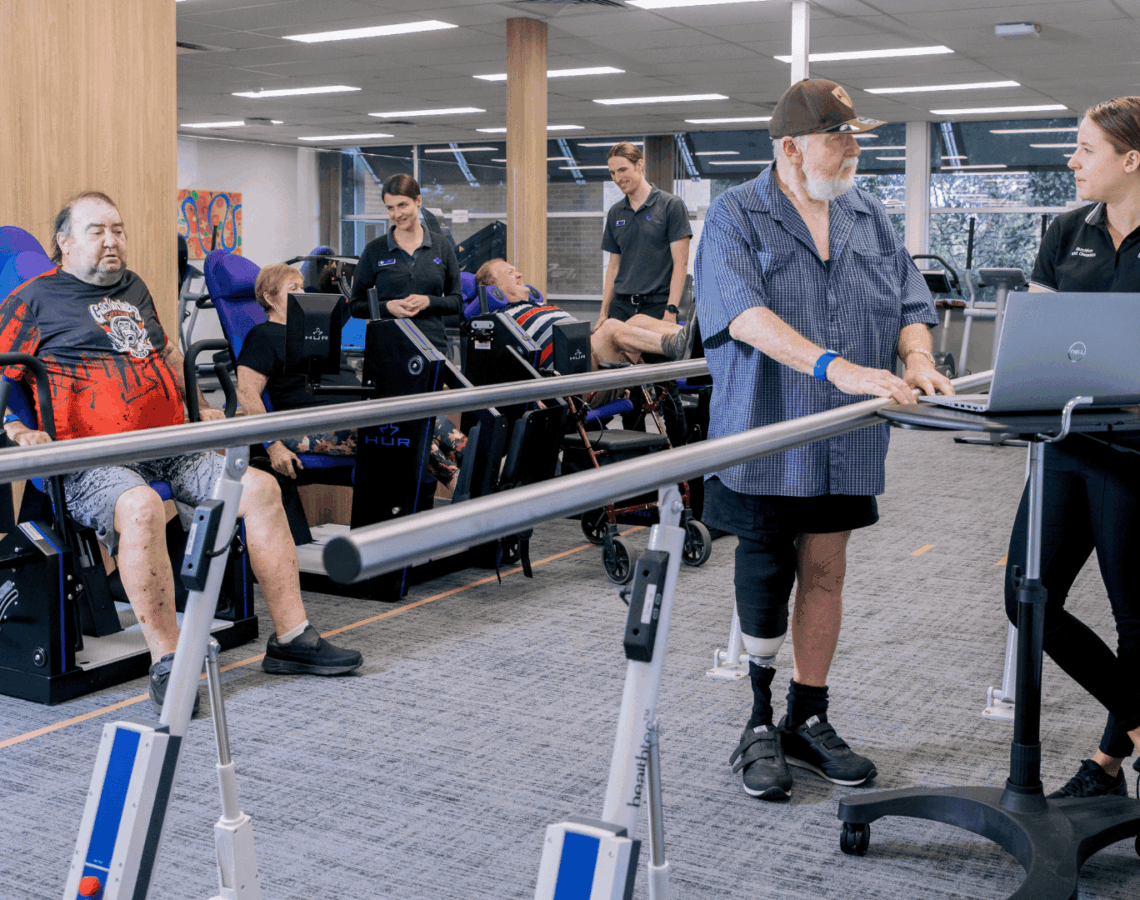Logan Program results reveal pathway to reducing pressure on health system

- Reduction in number of hospitalisations and admissions the result of innovative diabetes program
- Diabetes is the fastest growing chronic condition in Australia, with type 2 diabetes representing up to 90% of cases
- Logan is one of Australia’s diabetes hot spots, with more than 23,000 people living with the condition
- Chronic diseases are the biggest contributor to premature death and disability in Australia.
A groundbreaking program aimed at supporting individuals living with or at risk of type 2 diabetes has delivered impressive results, offering hope for a healthier future and a pathway to reducing pressure on the public health system.
Delivered by UQ Health Care in partnership with Health and Wellbeing Queensland, Logan Healthy Living has offered a lifestyle management program for people in the Logan community living with or at risk of type 2 diabetes since 2021.
The University of Queensland Health and Wellbeing Centre for Research Innovation evaluation from the four-year pilot shows that Logan Healthy Living is reducing the burden of diabetes and shifting care away from public hospitals.
Approximately 850 people have commenced the program, with 78% successfully completing it.
When Clifford Magee was diagnosed with type 2 diabetes in July 2024, his GP recommended he join the Logan Healthy Living program. With a 12-month plan to cease his medication, Clifford is getting close to his goal.
‘That big carrot is hanging there,’ Clifford Magee said. ‘I have halved my medication since I commenced the program – and I think that speaks for itself.’
When comparing participant data in the 12 months before versus the 12 months during the program, there are significant reductions:
- 10% reduction in the total number of hospital admissions (any cause);
- 10% reduction in the total number of hospital bed days (any cause);
- 30% reduction in the total number of people presenting to emergency (any cause); and
- number of people with at least one hospitalisation (any cause) reduced by almost 40 per cent.
‘These numbers are incredibly encouraging and demonstrate that through partnership, we can broaden access to preventive healthcare, empowering individuals to manage their wellbeing and ease the pressure on our world-class public health system,’ said Dr Robyn Littlewood, Chief Executive, Health and Wellbeing Queensland.
‘This is what we set out to achieve when we launched Logan Healthy Living in 2021, and the successful outcomes demonstrate a model for scalable, integrated chronic disease prevention and care.’
Chronic diseases are becoming increasingly prevalent and pose a significant challenge to the health system.
More than half (53.6%) of the people living in Queensland had at least one chronic condition in 2022.1
- almost 1-in-3 Queenslanders were living with one chronic condition
- another 1-in-5 were living with more than one of these conditions.
Logan, south of Brisbane, is one of Australia’s diabetes hot spots, with more than 23,000 people living with the condition. Type 2 diabetes is the most common cause of potentially preventable hospitalisations in Logan, 40% higher than the national average.
This has required a targeted, place-based approach to address local community need.
Additionally, the program is supporting university student placements and postgraduate research projects, with a focus on preventive health, interprofessional practice, innovation and outcomes-based care.
‘UQ Health Care, along with Health and Wellbeing Queensland and partners, have effectively built and delivered a real difference for the people of Logan and the South Brisbane region,’ said Wallis Westbrook, CEO UQ Health Care.
‘We have forged a collaborative model of care placing people in the middle with control of their care and wellness pathways.
‘In doing this we have reduced their demand on the public health system, saved money and delivered great value for individuals, for the health system and for the economy.’
Type 2 diabetes accounts for 85-90% of diabetes cases in Australia and is strongly associated with modifiable risk factors. Around 53% of cases are linked to factors such as excess body weight, which are shaped by the environments we live, work and eat in.
The Australian Institute of Health and Welfare’s (AIHW) Australian Burden of Disease Study 2024 reports overweight and obesity have now surpassed tobacco as the leading risk factor contributing to Australia’s disease burden in 2024.
‘Now is the time to be exploring how we continue to deliver here in Logan and look to expand the model to other regions with higher-than-average instances of chronic conditions, especially type 2 diabetes,’ said Wallis Westbrook.
‘Logan Healthy Living proves that a well-planned and effectively delivered program can change people’s lives and deliver great value, a positive return on investment for government and strong economic impact for the community.’
Health and Wellbeing Queensland has provided $2.25 million to support Logan Healthy Living, which is delivered through a Queensland-first alliance with The University of Queensland (UQ), UQ Health Care, Metro South Health, Brisbane South Primary Health Network and Griffith University.
For every dollar invested in Logan Healthy Living, $1.82 of value was generated, demonstrating an 82% return on investment.
Media contact details:
media@hw.qld.gov.au | 0439 599 210


